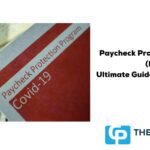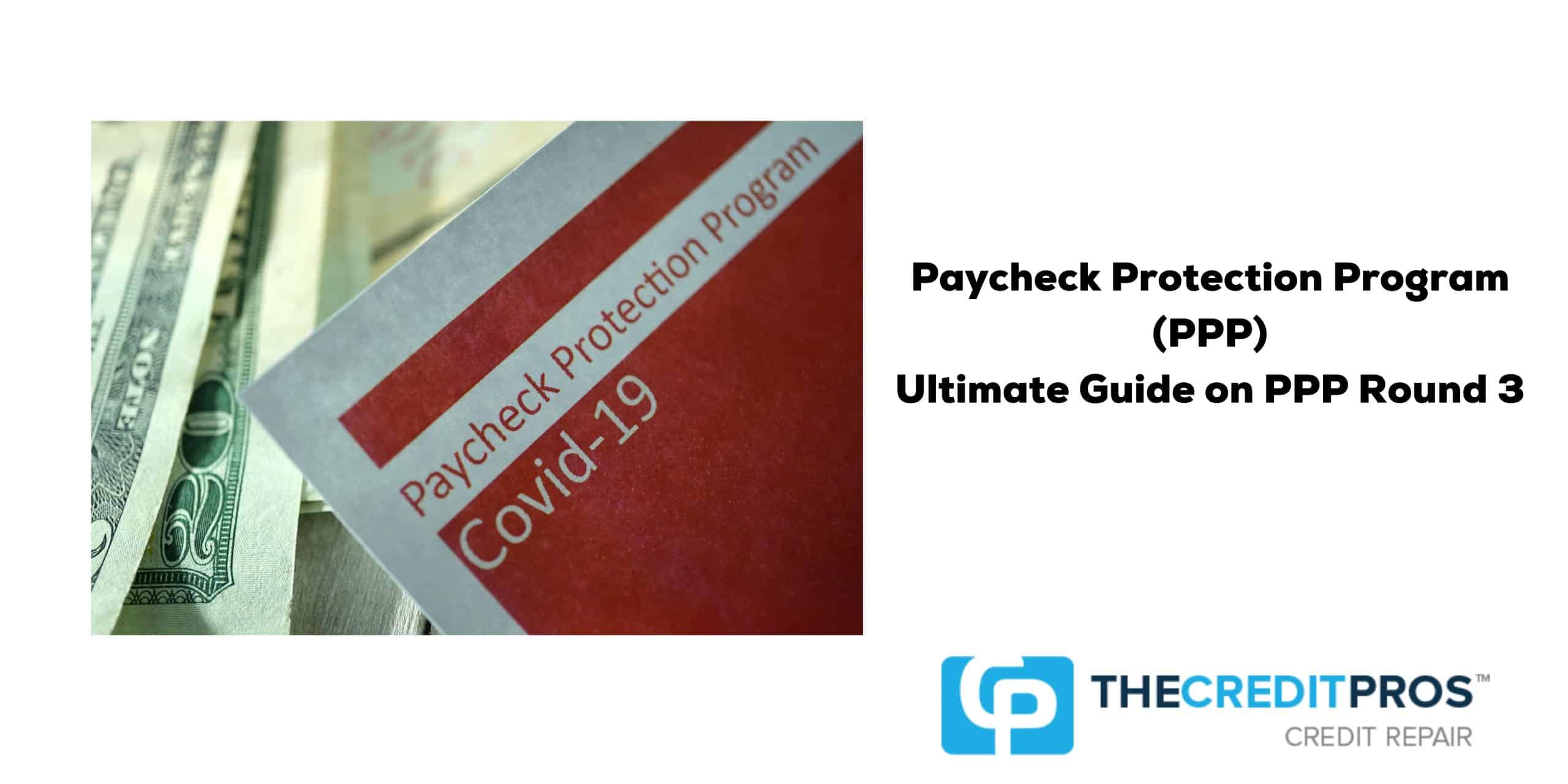Paycheck Protection Program Round 3 – An Ultimate Guide
The Paycheck Protection Program is a business loan program provided by Congress as the part of CoranaVirus Aid, Relief, and Economic Security Act. On Dec 27, 2020, the Consolidated Appropriations Act (CAA) was signed into law by then-President Donald Trump. This act was put into place in order to, among many other things, appropriate new funding for the Paycheck Protection Program (PPP).
The Paycheck Protection Program has been lauded and criticized by people on both sides of the aisle. Supporters note that businesses need to be kept afloat during a time when many workers are being laid off, whereas critics see it as a way for businesses to get large low-interest forgivable loans while still cutting their payroll. One thing is certain, though: the Paycheck Protection Program provides funding for businesses that may not otherwise be able to pay employees still on their payroll, particularly if they’ve had to shut down or slow down their business activities.
In this article, you will learn about Round 3 of the Paycheck Protection Program, who qualifies for Round 3 of the Paycheck Protection Program, and what you can expect.
History of the Paycheck Protection Program
The Paycheck Protection Program was created in March 2020 by the CARES act and originally provisioned $349 billion in funding for business relief. This funding lasted only two weeks, expiring on April 16, 2020.
This program was highly popular and additional funding for the Paycheck Protection Program (PPP) was in high demand. As a result, H.R. 266 (otherwise known as the PPP and Health Care Enhancement Act) provisioned $310 billion in funding, was signed into law on April 24, 2020, and expired on August 8 of that year.
Round 3, which provisioned $284 billion in additional funding for the Paycheck Protection Program (PPP), was signed into law on Dec 27 and is set to expire on March 31, 2021.
Who Qualifies for Paycheck Protection Program (PPP) Round 3?
In order to qualify for Paycheck Protection Program Round 3, your business will need to have been in operation on or before February 15, 2020. This is to make sure that only businesses that have been affected by the pandemic are able to get funds.
Paycheck Protection Program (PPP) Round 3 applies to businesses with 500 or fewer employees, or if you’re getting a second draw loan, 300 or fewer. They also apply to businesses that are categorized as being “Accommodation or Food Services” and have 500 or fewer employees per location (300 if you need a second draw loan). This means that even if a business under Accommodation or Food Services has far more employees, it can still qualify if they have 500 or fewer employees per location.
Eligible entities are as follows:
- Corporations that meet the eligibility criteria:
- Independently owned franchises;
- Self-employed persons, contractors, and sole proprietors (including gig workers);
- Businesses or nonprofit organizations that are listed under 501(c)(3), 501(c)(19), or tribal businesses under 31(b)(2)(C);
- Housing cooperatives;
- Section 501(c)(6) organizations that meet the eligibility criteria
- News organizations controlled by a business or nonprofit broadcasting entity categorized under NAICS code 511110 or 5151 that also meet the eligibility criteria
What Are The Terms Of Paycheck Protection Program (PPP) Loans?
Paycheck Protection Program (PPP) loans outlined in Round 3 are guaranteed by the government, require no collateral or personal guarantees, and have an interest rate of 1% per year. These loans mature after five years.
Your Paycheck Protection Program (PPP) loan must be used for payroll, mortgage interest, rent expenses, or utilities. In this third round, you may choose your own covered period between 8 and 24 weeks, meaning expenses incurred in that period would be eligible to be paid for by the PPP loan.
100% of the PPP loan can be forgiven if you meet the following criteria:
- 60% of your loan must be used for payroll
- You must maintain AT LEAST the same number of employees on your payroll, with exceptions for employees that are provided with a rehiring offer but did not accept. Exceptions can also be made for employees that are fired with cause, resigned voluntarily, or asked for and received reduced hours
- You must maintain at least 75% of the total salary
You may also use your loans for:
- Property damage not covered by insurance that was caused by various protests in 2020
- Supplier costs that are essential to operations
- Worker protection: expenses required to comply with CDC, HHS, OSHA or other government (state, local, or federal) guidelines
- Operational expenses: these include:
- business software (including cloud computing services);
- Expenses required for product or service delivery
- Expenses required for payroll management
- HR and billing functions;
- Expenses required to track supplies, inventory, records, and expenses
Expenses outside of these criteria are not eligible for forgiveness, however, any eligible expenses can be forgiven. As a result, some businesses may find that they must pay back a portion of their loan as those expenses were found to be ineligible.
These terms apply to both first-draw and second-draw PPP loans.
What’s The Difference Between First-Draw and Second-Draw Loans?
If you’re getting your PPP loan for the first time, you’re taking what’s called a first-draw PPP loan. First-draw loans can be provided for up to $10 million, whereas second-draw loans can be provided for up to $2 million.
If your business has more than $10 million in eligible expenses (or $2 million for second-draw loans), then only $10 million (or $2 million) can be covered by a PPP loan.
There are some other considerations for second-draw loans. You’re eligible for a second-draw loan if:
- You’ve already used (or have planned the use of) all of the funds provided from your first-draw loan by the time you receive your second-draw loan;
- Your business (or business location for Accommodation or Food Services businesses) has under 300 employees;
- You have experienced a loss of at least 25% of gross receipts in one quarter in 2020 (compared to the same quarter in 2019), and you have demonstrable proof, AND
- 100% of your first-draw loan went to eligible expenses
Even if you meet these requirements, you still may not be eligible for a second-draw loan. If your company:
- Shut down permanently,
- Exists for the purpose of political activities (including lobbying),
- Is owned by an entity created or based in China (PRC) or Hong Kong, or has a board member who is a legal resident of China (PRC), AND/OR
- Has received a shuttered venue operator grant (Section 24 of the CAA),
…then it is not eligible for a second-draw PPP loan under any circumstances.
How Can I Apply For A Round 3 PPP Loan?
The Small Business Association (SBA) is offering first and second-draw PPP loans. They have a free online tool called Lender Match to help you find an eligible lender for your PPP loan. This tool is not to be used for EIDL loans. It will take around 2 days to be matched with a lender.
Beware of scammers who may pose as eligible lenders to try and get your information! Only use the Lender Match site on the official SBA.gov website!
Use of Round 3 PPP Funds
- The CAA expands the types of expenses for which PPP round 3 is used.
- This applies to existing PPP loan funds if you have obtained forgiveness.
PPP will allow you to use loan proceeds for
- Certain operations expenses
- Covered property damage costs
- Listed supplier costs
- Covered worker protection expenses
Learn more about the application process for a Round 3 PPP loan here!
Frequently Asked Questions
Is Paycheck Protection Program (PPP) eligible for loan forgiveness?
PPP loans are eligible for loan forgiveness if funds were used for certain eligible business expenses. If you pay off your loan in full before you apply for forgiveness, you are no longer eligible for loan forgiveness. If part of the loan is not forgiven, you will be responsible to repay the amount not forgiven plus any accrued interest.
What is the covered period?
The Covered Period begins on the date the loan was originally disbursed. It ends on a date selected by the Borrower that is at least 8 weeks following the date of the loan disbursement and not more than 24 weeks after the date of loan disbursement.
How to apply for a Paycheck Protection Program (PPP) loan?
You will need to complete a PPP loan application and submit the application with the supporting documentation to an approved lender. The SBA has released first-draw and second-draw PPP loan application forms for sole proprietors, independent contractors, and other self-employed individuals who file an IRS Form 1040, Schedule C. All other borrowers should use these first-draw and second-draw PPP loan application forms.
Related Articles
Conclusion
Paycheck Protection Program by CARES Act will help your businesses to secure loans. If the employee size of your business is less than 500, you are eligible for this PPP. You lose your eligibility for loan forgiveness if you pay off your debt in full before requesting forgiveness. If a portion of the debt is not forgiven, you will be required to pay back the remaining balance together with any interest that has accrued.
The Credit Pros is a credit repair company functions abiding by the laws of the consumer protection act and it guides customers to increase their credit scores. For more information, call us at 1-800 411-3050


